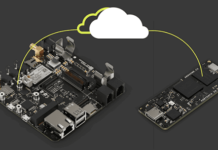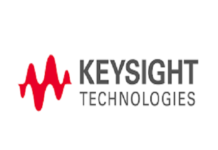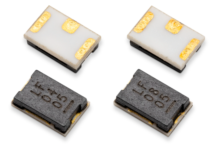
MIPI Sensor Working Group standardizing sensor interface to unify a fragmented sensor industry and serving the market needs of the mobile, mobile-influenced and sensor industries. Ken Foust, chair, MIPI Alliance Sensor Working Group shares his insights with Electronics Media on MIPI opens access to MIPI I3 Sensor interface to developers.
Electronics Media: Tell us about the MIPI Alliance and its Sensor working group?
Ken Foust: MIPI Alliance (MIPI) develops interface specifications for mobile and mobile-influenced industries. There is at least one MIPI specification in every smartphone manufactured today. Founded in 2003, the organization has 300 member companies worldwide and 13 active working groups delivering specifications within the mobile ecosystem. Members of the organization include handset manufacturers, device OEMs, software providers, semiconductor companies, application processor developers, IP tool providers, test and test equipment companies, as well as camera, tablet and laptop manufacturers.
The MIPI Sensor Working Group was formed in 2013 to address fundamental system design challenges caused by the proliferation of sensors in devices. High-tier smartphones, for example, can have 10 or more sensors, requiring 20 or more signals to perform a variety of functions, yet integration requirements can vary for each sensor. The resulting fragmentation caused by these numerous interfaces has complicated integration. Moreover, in addition to the main interface used for each sensor, additional signals might be required to enable interrupt functions, chip select, or sleep signals. These varied requirements can increase product development and integration costs, and stifle innovation. The working group is chartered to develop a flexible interface that enables interface compatibility between vendors’ sensor solutions; reuses existing interfaces when needed; provides value to adopters and sensor vendors; and can evolve to serve future sensor architectures and the market needs of the mobile, mobile-influenced and sensor industries, as well as complementary industries.
EM: Recently, MIPI I3C has been launched; kindly introduce the interface and how it is accepted by the industry?
Ken: MIPI I3C is a control and data interface optimized for connecting sensors to an application processor. It is a core sensor integration technology that can combine multiple sensors from different vendors in a device to streamline integration and improve cost efficiencies. It gives developers unprecedented opportunity to craft innovative designs for any mobile product, from smartphones, to wearables, to safety systems in automobiles.
MIPI I3C can integrate mechanical, motion, biometric and environmental, and any other type of sensor. It incorporates key attributes of the traditional I2C and SPI interfaces and expands beyond sensor integration to provide a new, unified, high-performing, very low power solution. The technology is implemented on a standard CMOS I/O. It uses a two-wire interface, which reduces pin count and signal paths to offer system designers less complexity and more flexibility. It can also be used as a sideband interface (e.g., for camera interfaces) to further reduce pin count. MIPI I3C supports a minimum data rate of 10 Mbps with options for higher performance high data rate modes, offering a substantial leap in performance and power efficiency compared with previous options.
Additional technical highlights include multi-master support, dynamic addressing, command-code compatibility, and a uniform approach for advanced power management features, such as sleep mode. It provides synchronous and asynchronous time-stamping to improve the accuracy of applications that use signals from various sensors. It can also batch and transmit data quickly to minimize energy consumption of the host processor.
The Alliance has sponsored several “plugfests” throughout 2017, each of which has had strong participation. These events have provided opportunities. for early adopters to perform interoperability testing of their designs for smartphones, IoT, automotive and other applications. Through these events, companies from around the ecosystem are demonstrating their commitment to MIPI I3C and paving the way for commercialization of products and devices based on the specification. In fact, we’re already starting to see products implementing MIPI I3C being introduced in the marketplace.
Similar interoperability workshops will take place throughout 2018, including one on 12-13 March in Vancouver, B.C.
EM: What was the need to introduce MIPI I3C interface and what are your approaches to educate developers about the new interface?
Ken: MIPI I3C was developed to unify a fragmented sensor industry. As mentioned earlier, there was a need to address the integration challenges resulting from the proliferation of sensors. The market needed a flexible solution that could work with different vendors’ sensors and that could reuse existing interfaces as needed. The specification expands the use cases beyond sensors to include interface integration support for touch, camera, debug and other applications.
MIPI Alliance is committed to helping support the adoption of MIPI I3C by providing educational resources, including some of the following available for download: FAQs (“Frequently Asked Questions (FAQ) for MIPI I3C Version 1.0”); “A Developer’s Guide to MIPI I3C for Sensors and Beyond” presentation; and “MIPI Whitepaper: Introduction to the MIPI I3C Standardized Sensor Interface.”

(Note: Ken will host a webinar, “A Developer’s Guide to MIPI I3C Implementation and MIPI I3C Beyond Sensors,” on 7 February 2018, at 11:00 am EST, 8:00 am PST. To register for the webinar, go to http://bit.ly/2kats6J.)
EM: What will be the impact of granting open access to the MIPI I3C interface to companies, developers and MIPI Alliance?
Ken: MIPI I3C unifies key attributes of the venerable I2C and SPI interfaces, improving on capability and performance while maintaining backward compatibility to I2C and its existing ecosystems. Compared to a typical I2C implementation, the new I3C protocol provides more bandwidth while consuming up to 10 times less power.
Extending access to MIPI I3C provides an opportunity to spur innovation and help other industries beyond mobile. It supports greater adoption and interoperability, strengthens the ecosystem and provides for a richer development environment. In addition, opening access allows students and academia to use the specification in research and development.
EM: Are there any plans to extend the portfolio in 2018?
Ken: MIPI’s Sensor Working Group is currently finalizing a MIPI I3C v1.1 release in Q1’18. It will be a backwards-compatible release that enhances MIPI I3C in a few key areas such as new Common Command Code (CCC) capabilities, comprehensive flow control, enhanced error detection/recovery and multi-lane for speed, while further clarifying existing capabilities in the specification.
MIPI Alliance is also broadening the MIPI I3C ecosystem with new specifications that implement MIPI I3C that will be released in 2018. These specifications include: MIPI I3C Host Controller Interface (HCI), a forthcoming specification that enables a single software driver to support MIPI I3C hardware from various vendors; MIPI Touch, MIPI Debug for I3C, MIPI DisCo for I3C and MIPI CSI-2 v2.1.
The mobile industry has seen drastic changes within few years. What are the major challenges the industry is facing with introduction to new technologies like 5G, IoT, autonomous vehicles, smart homes at present?
From our perspective, as smartphones, laptops, IoT and other devices get equipped with more powerful, bandwidth-hungry sensors like 360-degree cameras, current out-of-date buses won’t be able to keep up in the long run.
Likewise, more sensors are being packed into smart devices, robots, drones, and industrial devices, and MIPI I3C will serve as a speedy short-distance communication channel that sips power. I3C will primarily be used for data transfers over a circuit board. But as the IoT market expands, it will serve a growing need to transfer data collected from a wide range of mechanical, environmental, biometric and health sensors.
The use of MIPI I3C could expand to a new range of sensors in PCs, drones and virtual reality headsets. It could be used for 3D cameras on drones capturing high-resolution images or for speeding up communications inside autonomous cars.
MIPI I3C has become a springboard for development activities within MIPI Alliance, extending the use cases and further enhancing its value to the developer community.


















